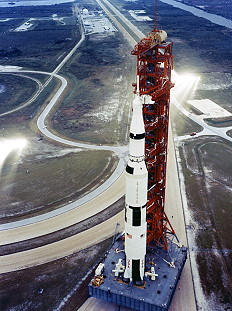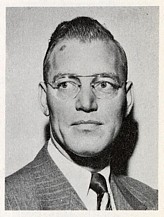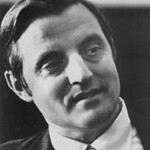1960s: The Highlights
The 1960s was a time of great change in social, political, technological and economic relationships worldwide but especially in the United States. The decade began with a series of crisises, the Berlin Crisis, the Brezhnev crisis [1], the Cuban crisis [2], the crisis in Vietnam, the assassination of the President of the United States (John F. Kennedy), the race riots, civil unrest, the Vietnam war etc.
The Vietnam War was a particularly shocking blow to the United States. As the crisis following the death of Mao Zedong in China lead to increased militarism, the United States was forced to choose pullback and defeat or the risk of a Korea-like conflict sparking an all out nuclear conflict with the other leading communist power. Thankfully, Johnson chose the former although it likely cost him the Presidency as the Republicans swept into the White House at decades end[3].

However the United States also made a equal if not greater degree of progress during the decade. Even as a barrier was arising in Berlin, other barriers were falling down. Religious barriers were broken as the first Catholic President of the United States was elected, racial barriers were broken as Martin Luther King Jr lead the civil rights movement, ultimately leading to the passage of the Civil Rights Act in 1964 (abolishing Jim Crow & Segregation), the Voting Rights Act in 1965 (protecting the right of black people to vote) and the Housing Rights Act of 1968 (ending racial discrimination in housing). The role of women in society was also changing. The Equal Pay Act of 1963 abolished the pay disparity between men and women while the Women's Liberation movement and Feminism were sweeping the nation. Religious, Conservative and Puritanical norms surrounding sex were cast aside as pornography, the introduction of the Birth control Pill, the Sexual Revolution and Free Love turned America upside down. Norms surrounding drug use were also experiencing major changes as cannabis saw increasing usage among American youths, LSD and other psychedelics also became popular in the so called "counter-culture" and "hippy" movements. The beginning of the Gay rights and Gay liberation movement can also be traced to the 1960s. In the beginning of the 1960s, homosexual acts was illegal in every US state with lengthy prison times or even hard labor, until 1962 when Illinois first decriminalized sodomy which would precede a wave of decriminalisations in the 1970s. With the youth rebelling, many turned to non-Stalinist but non-liberal "New Left" movements such as Anarchism, Maoism and Communalism. The musical highlights of the decade included the Beatles, the Monkeys, Woodstock & psychedelic rock.


Star Trek (1966-1969) became a popular culture & science fiction classic, combining the technological advances of the decade (space race, computers etc) with the social and political issues of the era (Cold War, Racism, Economic Inequality etc). For the first time, a cast of various different races and ethnicities was broadcast nationally on television.
The technological optimism of the 1950s continued into the 1960s. In previous decades the modern American family became middle class with such amenities as refrigerators, indoor air conditioning, washing machines, automobiles, a suburban house, modern stoves & ovens (more recently, atomic ovens or "microwaves"). The Interstate Highway Act and NASA showed the promise of things to come. The 1962 Seattle World's Fair and 1964 New York World's Fair showcased this hopeful view of the future, aided by modern technology. The dawn of the Space Age began to realize many of the promises made by science fiction, including earth orbiting whether, military and communications satellites, manned space travel to the Moon and robotic missions to the nearby planets. Atomic energy was beginning to become commercially affordable, offering potentially unlimited clean, cheap energy. The resources of Space, the Oceans, Antarctica and untapped riches of the Earth would provide an ever higher standard of living to an ever growing population with ever more sophisticated modern technology including materials not yet imagined or conceived of yet. Picturephones would allow one to both speak to and see those from around the globe. The first supersonic jetliners (UK & France's Concord and the Soviet's TU-144) debuted in their first test flights at decades end while American plans for an SST had already reached full-mock-up stage. The 1968 film "2001: A Space Odyssey" by Stanley Kubrick and Arthur C. Clarke predicted a world marked by revolutionary technological advances in computer nuclear and space technology with the metaphorical analogy of humans becoming Godlike.


Moonbase and Space Station as predicted by 1964 World's Fair in New York
At the same time, a countering trend of pessimism was equally operative during the time. The United States ultimately lost the race to the Moon, the threat of nuclear destruction hung precariously over the heads of all people and increasingly people were beginning to fear that massive population growth would lead to a Malthusian crisis of overpopulation. With the addition of this new threat of resource depletion, environmental destruction and overpopulation added to the list of potential fears, many began to question the large sums of money going into Space rather than social programs for the poor. In addition fears of the violence, crimes and excesses of the counterculture began to ferment a revitalized conservative & right-wing libertarian movement, threatening to overthrow the New Deal establishment which had held power since Franklin Roosevelt, with the election of Nixon being their first major political accomplishment .

Meanwhile in Europe, the continent was also shaken up with crisis. The construction of the Berlin Wall between East and West Germany by the Soviet Union in 1961, the shooting down of the leading Soviet politician Lenoid Brezhnev and the resulting Algerian crisis between the USSR and France [1], and the sweeping wave of decolonization as Africa and the Arab world escaped from European colonialism. The 1968 leftist uprising in France showed the ideas of the New Left alive in western Europe. In Eastern Europe the Khruschev thaw which had begun in the 1950s continued as the Soviet Union and Eastern block continued to liberalize. Leadership was handed over from Nikita Khrushchev to his protégé Alexei Kosygin as Khrushchev's health continued to decline in the late 1960s. Alexander Dubcek played a big role in reforming Czechoslovakia to create "Socialism with a human face". The implementation of Market reforms and the creation of "Market Socialism" in the late 1960s continued the list of once-thought impossible reforms (which had begun with in 1956 with Khrushchev's denunciation of Stalin in his "secret speech"). As relations improved between the USSR and Yugoslavia, they utterly broke apart with Albania leaving the Eastern Bloc entirely to continue Stalinism as the rest of the Eastern bloc experienced greater Freedom of Speech and Civil Liberties.[4]
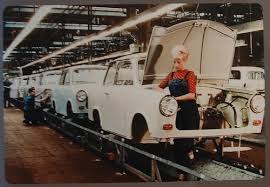
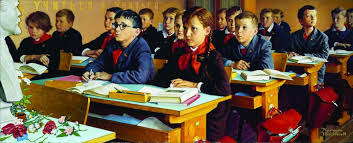
In Asia, Mao Zedong's China broke off ties with the Soviet Union calling Khrushchev's reforms "revisionist". Meanwhile the civil war raged in Vietnam between communists and capitalists. Ultimately the increasingly hostile relations with the USSR fueled a increasingly violent and chaotic cultural revolution leading to the ultimate death of Mao Zedong and the crisis of who would become the successor. The militarist Lin Biao administration which took over ultimately threatened to repeat the actions taken in Korea until the US withdrew in fear of the consequences and facing increasing crisises at home, setting the stage for communist expansion into Vietnam, Laos and Cambodia.[3]
In Africa decolonization was sweaping the continent in the "wave of change" leading to several dictatorships and military regimes siding with either the US, USSR or remaining non-aligned. In the Arab world secular nationalist and anti-imperialist movements were challenging post-colonial monarchies and kingdoms as Nasserism, Ba'athism, Arab Socialism and Communism spread across North Africa and the Middle East. In the South and Central America the communists struck a single major victory in Cuba before the movement died out as several US aligned military regimes and dictators took over, most notabley in the Brazilian coup of 1964.
Divergences
[1] While flying over Algeria, Brezhnev (Head of Presidium) was shot down by the French, causing all onboard to perish in an international incident in 1961.
[2] With the Soviets having developed ICBMs, the Cuban Missile Crisis never happens but the Bay of Pigs Invasion (1961), Fidel Castro declaring himself Communist (1961) and the crisis surrounding that still occur.
[3] The closer relations between the US and USSR than OTL lead to an even more violent and bloodied Cultural Revolution in which Mao Zedong is killed while flying by Red Guards (not realizing it's him). The subsequent crisis of leadership produces the militarist Lin Biao who's threat of getting involved against the US become sufficient to warrant a US retreat from Vietnam in 1968.
[4] Without the Cuban Missile Crisis or Brezhnev, Khrushchev is able to continue leading and reforming the USSR, ultimately adopting Alexei Kosygin as his successor. When Czechoslovakia attempts to reform, the USSR cautiously watches and actually ends up encouraging it along with the Kosygin economic reforms.
